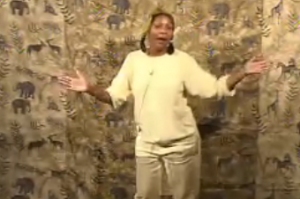Research show that while listening to oral storytelling, physiological changes occur: “…blood pressure and body temperature lowers, breathing slows, and the brain becomes more active in certain areas during this altered state of mind” (Greene & Del Negro, p. 49). This physiological state, as well as the appearance of a trusted adult telling stories that teach, entertain, and engage, help young people connect to the story and to the teller. “Storytelling…forges an intimate relationship between teller and listener that continues far beyond the actual telling of a tale” (Haven & Ducey, 2007, p. 14). This relationship can be very important in young people’s lives. Telling a story from their perspective is another way to build that connection, by demonstrating that you care about their lives and issues.
A study done on storytelling in museums showed that it shifted the patron’s perspectives of the museum from place of work or study to a place of leisure (van Vliet & Hekman, 2012, p. 3). This could work in libraries as well.
Telling personal stories is a great way to connect with listeners. One that I loved was Kevin Kling’s story of how he was struck by lightning as a young person, and how all the men in his family had also been struck. This story of him as a young person can help little ones who can’t imagine that an adult was every a child connect their experiences with their families to the storyteller. Watch it here: http://www.prattlibrary.org/home/storyIndex.aspx?id=14086
Another sweet and personal tale is this story by Elisha Minter about her grandmother’s biscuits. It is important because it shows the fallibility of adults we respect, and how our perspectives change with new knowledge. Watch it here: http://www.cmlibrary.org/bookhive/zingertales/default.asp?storyid=28
A fun way to connect with listeners is to use participation. This story, of Goldilocks and the Three Bears Reimagined is full of physical movement and a rewriting of the tale. Sadari Saskill recorded this with the intention of involving young people who may struggle with language or who learn in multiple ways. Saskill does a wonderful job introducing the story and explaining what she is going to do before she does it, which is an important pedagogical tool, especially when working with students who struggle with language. Watch it here: http://www.prattlibrary.org/home/storyIndex.aspx?id=14118

